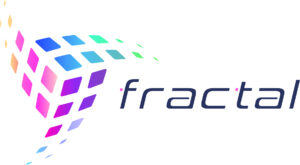Frequently Asked Questions:
Can Fractal Replace ERIC?
The short answer is YES.
Fractal is a technology. ERIC is an organization with a set of applications.
It is accurate to say any state using ERIC can build a system doing everything ERIC claimed to do – plus much more – and have such a system implemented in a month or two – at a very low cost.
How long would it take a state to replace ERIC with a Fractal Programming system?
Any state could have its voter rolls up and running in a Fractal system in about 30 days.
ERIC cross searches DMV files and other files that are not public. Can a Fractal system do the same?
Yes. Any file type that can be searched with current technology can be searched with Fractal. However, many of the Fractal features, like snapshot analysis, artificial intelligence-enabled address search are not economically feasible in ERIC.
What are some of the features a Fractal system can deliver that ERIC cannot?
Fractal systems use an entirely new tech stack from the current, obsolete technology used by ERIC. Thus some of the features Fractal systems deliver that ERIC could not include:
- Speed improvement of 1,000 to a million times.
- No need for large, expensive data centers.
- No tech staffs or programmers.
- Snapshot analysis – compare voter rolls several times each day and show any changes.
- Data accessed via a phone or tablet – instantly.
- Security. Access from any person or organization would be flagged and auditable, instantly.
- Cost. A Fractal system would cost less than an ERIC system costs.
- Cross search against FEC, county property tax records, other public databases = accuracy.
- Create and keep versions of every voter registration file into the trillions of records.
- The Fractal application uses an artificial intelligence (AI) engine matching unlike addresses. This has been shown to be more powerful than any commercial system.
How can our state compare its output in ERIC with a Fractal system?
This is a simple process. The Fractal team will run the state’s voter rolls, in parallel with ERIC.
Every transaction is run through both systems. The Fractal system adds its known bad address databases (churches, jails, cognitive care facilities) or ingests property tax records and accesses all the databases available to ERIC.
The state gives both teams a set of queries to run and both teams will show the result and the state can decide.
Can we run the Fractal system behind our firewall?
You can run a Fractal system behind your firewall. You can run it on your servers. You can run it on the cloud. You can run it from a vendor hosted SaaS (software as a service) system. If you want, the Fractal team will run it on their servers. Unlimited choices.
How secure is the Fractal system?
The security used in the Fractal system is better than current commercial technology. Commercial Fractal customers understand Fractals are built to live in a hostile, outside-the-firewall environment. Thus the security in Fractals exceeds commercial standards today.
What is the Fractal system downtime?
Typical commercial systems downtime is measured in hours per month. A Fractal system running in a production environment has less than 30 seconds a year downtime.
Can a Fractal system be de-platformed?
No. Every production Fractal system is run, simultaneously, in triplicate. If one system is attacked, the other two take over as a third is set up in the background.
Fractal systems are 100% distributed. Thus, there is no real center of gravity where an attack or a de-platforming action can take the system down.
The original charter for the Fractal system architecture was to enable Fractal users to survive a total nuclear attack. Fractal systems meet this goal today.
Fractal systems do not need large data centers. Thus, an Amazon, Microsoft or any data center cannot de-platform a Fractal system.
Does the Fractal technology do anything other than election apps?
Fractal technology is foundational. It is now used by major corporations for customer relationship management. It is used for forecasting, billing, managing large customers.
The Fractal technology is used to build web sites that cannot afford to be de-platformed.
Fractal technology can be used for almost any current type of application.
What is the cost of a Fractal system for a state?
A Fractal system for a state processes much more than voter rolls.
It includes many critical law enforcement features.
For instance, a Fractal state system would parse the FEC contribution rolls to find “contribution mules” illegally making thousands of donations.
It could compare the people and addresses in the Medicaid system with the property tax rolls – saving a state million of dollars lost to fraud. It could compare the Payroll Protection Program database with other state databases to find cases of abuse.
Such outcomes would likely cost less than what a state pays ERIC today for insufficient voter analysis.
Does the Fractal system use any “black box” technology hiding what it is doing?
The Fractal system has no black box features.
The code is basically Javascript and Node.js, well understood modern tools.
The foundations of Fractal are long established, widely used computing concepts.
Those evaluating Fractal Programming applications are given a deep dive tour of its distributed architecture and the database formats it uses.
Is the Fractal system tied to any political groups?
No. The Fractal team has no affiliations with any political group and the technology is made available to any group for any legal purpose.
The Fractal technology will be licensed to any state for making their databases transparent.
How does the Fractal team prove its speed?
The Fractal team builds all its apps in parallel with the current app it may be replacing. Thus, the client can run both apps side-by-side and test the speed, security, resiliency, reporting.
Are there examples of the Fractal apps speed?
Yes. In the commercial world, firms are moving to Fractals to reduce their IT (information tech) spend 50% or more for new apps or replacing legacy apps.
Firms are also using Fractals to run processes in a time limited window where conventional technology cannot make the time limit.
A typical example of a Fractal benchmark is a corporate billing system. This system ran bills for a million customers monthly.
The billing system took the entire $80 million data center 90+ hours to process. Thus, every day, the data center would shut down all other work and only process bills.
The Fractal system ran the identical app in parallel as a benchmark test.
The Fractal system ran on a $4,000 Intel NUC – no data center required.
The Fractal system ran the entire billing process in less than 3 minutes vs. 90+ hours.
The Fractal team then went further. They ran the same billing system, using Fractals, on an iPhone. No Intel NUC. No data center.
The entire billing system ran in less than 7 minutes. On an iPhone.

